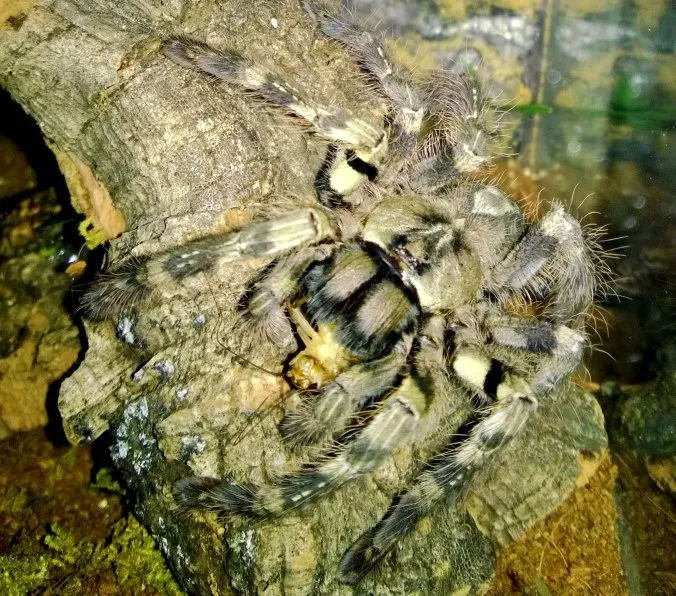Caring for a pet tarantula can be a rewarding experience, and understanding their feeding needs is crucial to their well-being. This comprehensive guide, “Tarantula Feeding 101 How to Feed Your Spider”, will walk you through every aspect of feeding your eight-legged friend. From the type of food to offer, to creating a feeding schedule, and addressing potential problems, you’ll gain the knowledge needed to keep your tarantula healthy and thriving. Remember, proper feeding is a cornerstone of responsible tarantula ownership, ensuring a long and fulfilling life for your pet. Let’s dive in and learn how to feed your tarantula!
Understanding Baby Tarantula Feeding Needs
Baby tarantulas, also known as spiderlings, have unique dietary requirements compared to their adult counterparts. Their small size and rapid growth necessitate a carefully considered approach to feeding. Understanding these needs is fundamental to providing the proper care. It’s essential to provide the correct nutrients at this critical stage to facilitate healthy growth, prevent potential health complications, and ensure the tarantula develops into a robust adult. Ignoring these needs can lead to stunted growth, increased susceptibility to diseases, and a shorter lifespan. The first step in feeding a baby tarantula is understanding its unique feeding requirements.
Why Proper Feeding Matters
Proper feeding is not merely about survival it directly impacts the overall health, development, and longevity of your tarantula. A well-nourished tarantula is more resilient, active, and vibrant. The right diet supports essential bodily functions, strengthens the immune system, and provides the energy needed for molting and growth. Neglecting this aspect can result in various health problems and reduce the spider’s lifespan. Providing a balanced diet is an act of responsible pet ownership and a crucial part of giving your tarantula the best quality of life. By providing a nutritionally complete diet, you are promoting health and vitality.
Impact on Growth and Development
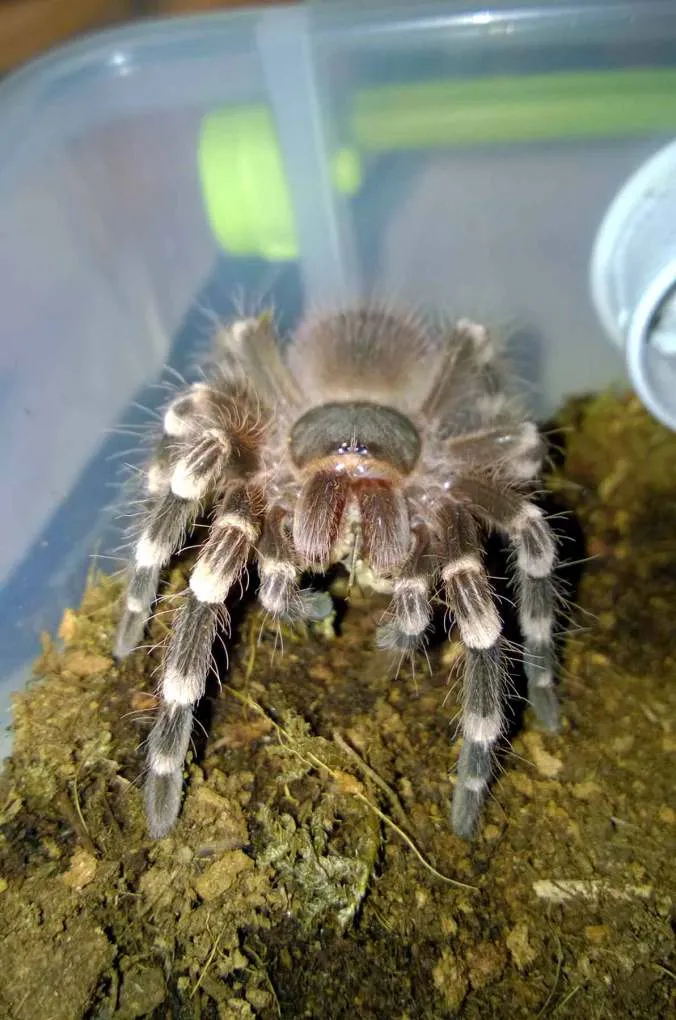
The food intake directly affects the spider’s growth rate and overall development, especially during the early stages. Young tarantulas undergo several molts as they grow, shedding their exoskeletons to accommodate their increasing size. Adequate nutrition is essential to support these molting cycles. A diet lacking in essential nutrients can lead to stunted growth, deformities, and other developmental issues. Ensuring a balanced diet rich in protein and other vital nutrients is key to facilitating healthy growth, proper bone structure, and successful molting. It’s also critical for promoting an appropriate body condition and ensuring the tarantula reaches its full potential.
Potential Health Risks
Incorrect feeding habits can expose your tarantula to health risks. Overfeeding can lead to obesity and potential health complications. The lack of essential vitamins and minerals in the diet can cause nutritional deficiencies. Contaminated food can introduce bacteria and parasites, leading to various illnesses. Some food items can also pose a choking hazard, particularly if the prey is too large. Consequently, being mindful of the risks associated with inappropriate feeding is essential. By understanding the potential hazards and taking precautions, you can proactively reduce health risks and ensure your tarantula remains healthy and well.
Choosing the Right Food for Your Tarantula
The selection of food is a vital aspect of tarantula care, as it directly influences their health and well-being. Tarantulas are obligate carnivores, meaning their diet consists solely of animal-based proteins. Providing the right type and size of food is essential to meet their nutritional needs. The primary objective is to offer a diet that mimics their natural feeding habits, delivering a balanced range of nutrients to sustain their growth, development, and overall health. Therefore, it’s necessary to conduct thorough research and make informed choices when deciding what to feed your tarantula.
Appropriate Prey Size
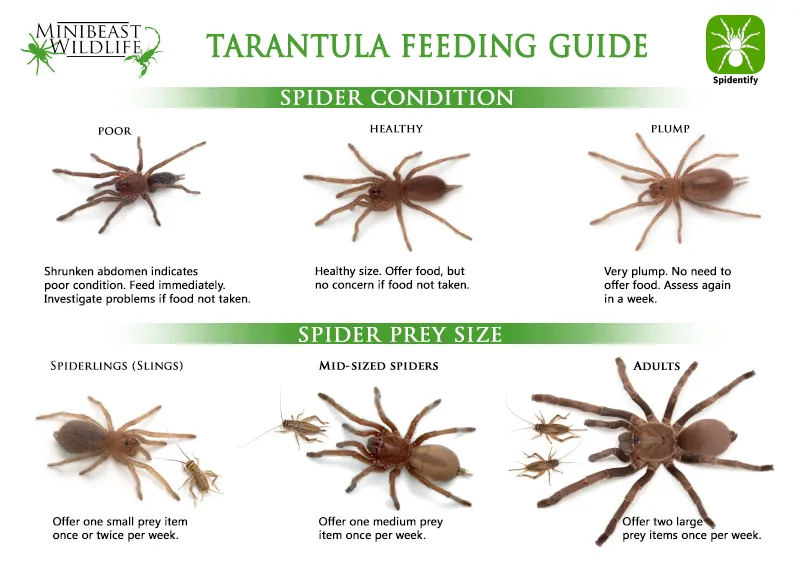
When it comes to tarantula feeding, prey size matters a lot. The general rule of thumb is to offer insects that are no larger than the tarantula’s abdomen. Feeding prey that is too large can lead to stress, injury, or even death. For baby tarantulas, smaller prey items like fruit flies or pinhead crickets are ideal. As the tarantula grows, you can gradually increase the size of the prey. Always monitor your tarantula’s feeding behavior to ensure it can successfully handle the prey. It’s best to start with smaller prey and gradually increase the size as the tarantula matures. This approach ensures the tarantula can safely consume its meals.
Types of Insects and Food Items
Several insects and food items are suitable for feeding tarantulas. Crickets are a popular choice, providing a good source of protein. Mealworms and superworms can also be offered, but they have a higher fat content and should be given in moderation. Other options include roaches, which are highly nutritious, and waxworms, which are best used as occasional treats. It is important to source insects from reputable suppliers to minimize the risk of parasites or exposure to pesticides. Variety is key to a well-balanced diet. Therefore, it’s a good idea to include a mix of different insects to provide a broad range of nutrients. This practice is also important because it mimics the tarantula’s natural diet.
Where to Source Food
The source of your tarantula’s food is very important to ensure that your pet receives healthy, parasite-free meals. Reputable pet stores and online suppliers specializing in reptile and invertebrate food are the most reliable options. These suppliers typically provide insects that have been bred in a controlled environment, minimizing the risk of parasites and diseases. Avoid collecting insects from your yard, as they may have been exposed to pesticides or other harmful substances. When purchasing, check the quality of the insects. They should be active, healthy, and free from any signs of illness or injury. Always ensure the insects are well-fed before offering them to your tarantula, as this will provide them with optimal nutrition.
Creating a Feeding Schedule
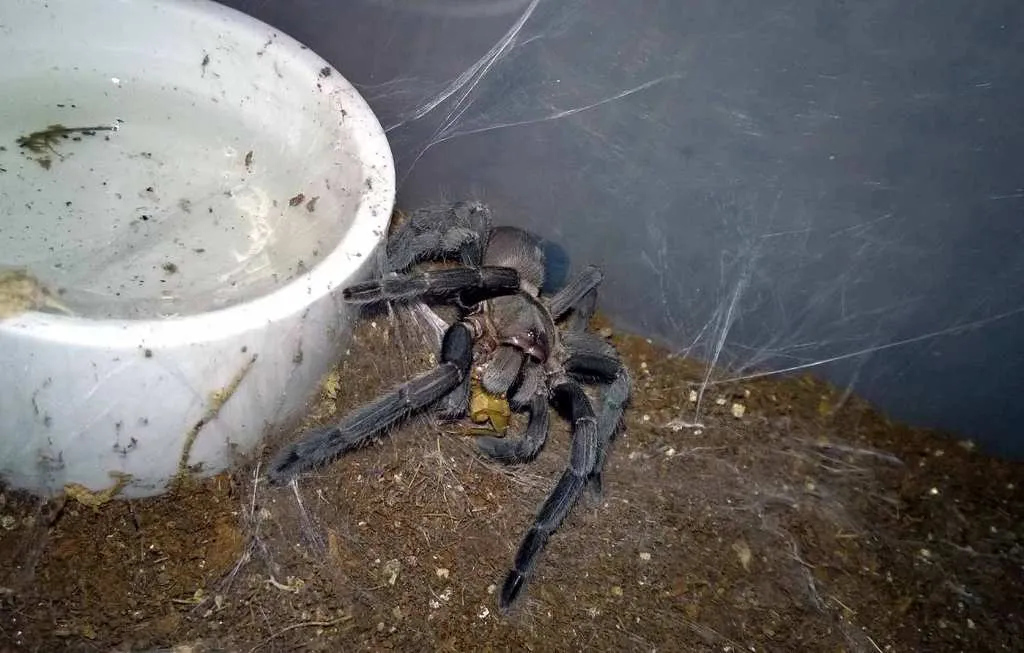
Establishing a consistent feeding schedule is crucial for maintaining your tarantula’s health and well-being. The schedule helps ensure the tarantula receives the appropriate amount of food and prevents overfeeding or underfeeding. The frequency of feeding, the amount of food, and any adjustments to your schedule should depend on your tarantula’s age, growth stage, and overall health. Remember, tarantulas are opportunistic feeders. The best approach is to provide a moderate amount of food. Keep in mind that it’s always better to slightly underfeed your tarantula than to overfeed them, as this can lead to several health problems. By understanding these factors and establishing a consistent schedule, you can promote a healthy and thriving tarantula.
Frequency of Feeding
The feeding frequency will vary depending on the tarantula’s life stage and the species. Spiderlings, due to their rapid growth, may need to be fed more frequently, possibly every other day or every three days. As the tarantula matures, you can gradually reduce the feeding frequency to once or twice a week. Adult tarantulas often need feeding only once a week or even less frequently. Always observe your tarantula’s feeding behavior and adjust the schedule as needed. If the tarantula consistently refuses food, it might be preparing to molt, or the feeding frequency could be too high. Tailoring the feeding frequency to the individual needs of the tarantula is the best way to provide a happy and healthy life.
Adjusting for Growth Stage
As a tarantula grows, its dietary needs change, and you must adjust the feeding schedule accordingly. Baby tarantulas, or spiderlings, require more frequent feedings. They need a consistent supply of food to support their rapid growth. As they transition into juveniles, you can gradually reduce the frequency. Adult tarantulas have slower metabolisms and don’t need to be fed as often. Monitor your tarantula’s size and weight. This will help to determine how often they require feeding. Regularly observe and adjust the schedule, ensuring the tarantula receives the appropriate nutrition. Adjusting the feeding schedule based on growth stage is vital to ensure healthy development and prevent potential health problems.
Monitoring Food Intake
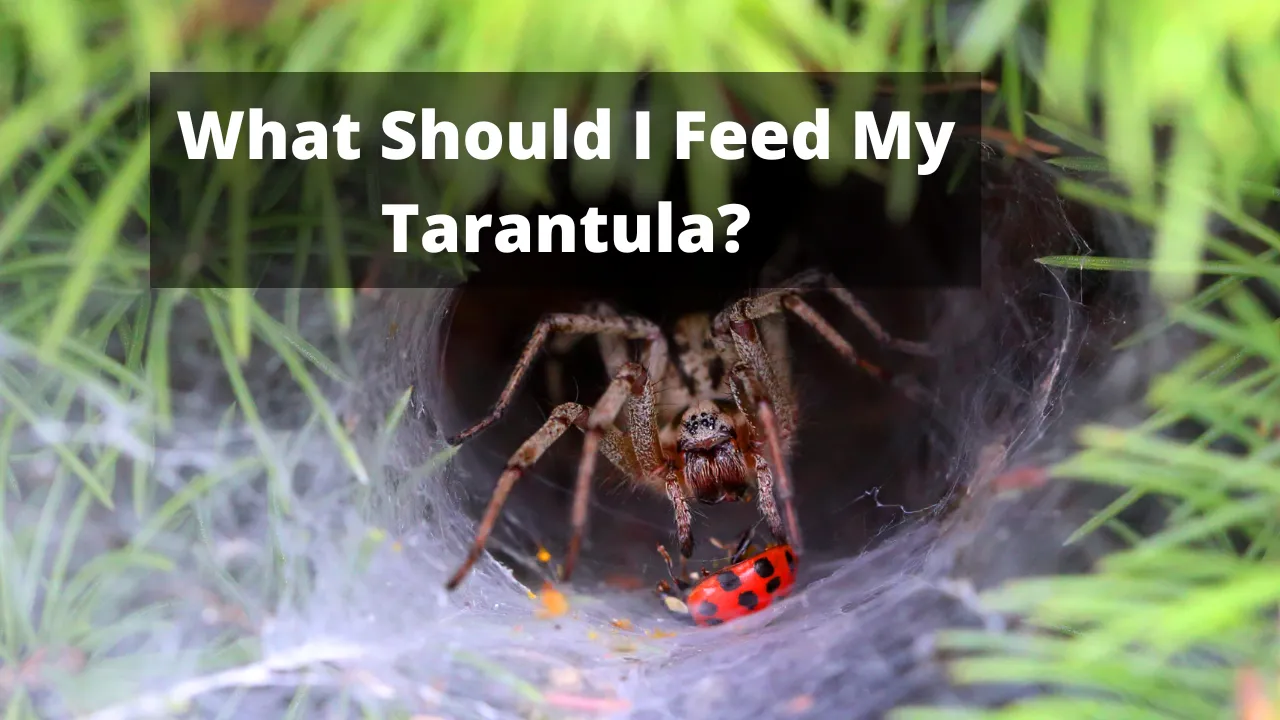
Carefully monitoring the tarantula’s food intake is essential for assessing its health and well-being. Note how much prey the tarantula consumes. The amount of food eaten is an indicator of the spider’s appetite and overall health. If the tarantula consistently leaves food uneaten, it could indicate several problems, such as an impending molt or the need for a different food source. Regularly observe the tarantula’s abdomen for any signs of overfeeding. Adjust the feeding schedule to suit the tarantula’s needs, preventing potential health issues. Consistent monitoring allows you to address problems early, ensuring your tarantula receives the proper nutrition and care.
Feeding Techniques
The proper feeding technique is just as important as the type and frequency of food. This ensures the tarantula consumes its meals safely and efficiently. The most effective methods involve introducing prey items in a way that minimizes stress for the spider while promoting natural feeding behaviors. Understanding the right techniques minimizes the risk of injury to the tarantula and maximizes the chances of a successful feeding session. The goal is to provide a safe and stress-free eating experience.
Introducing Prey
The way you introduce prey to your tarantula can affect its willingness to eat. When feeding your tarantula, gently place the prey item into its enclosure. You can use tongs to offer the food, especially for larger insects, which minimizes the risk of the prey escaping. Place the prey item near the tarantula, but avoid startling it. Give the tarantula time to locate and capture the prey. If the tarantula doesn’t show interest after a few hours, remove the prey. Observe the tarantula’s behavior to understand its preferences. By using the correct introduction method, you encourage the tarantula to eat while reducing any unnecessary stress.
Removing Uneaten Food
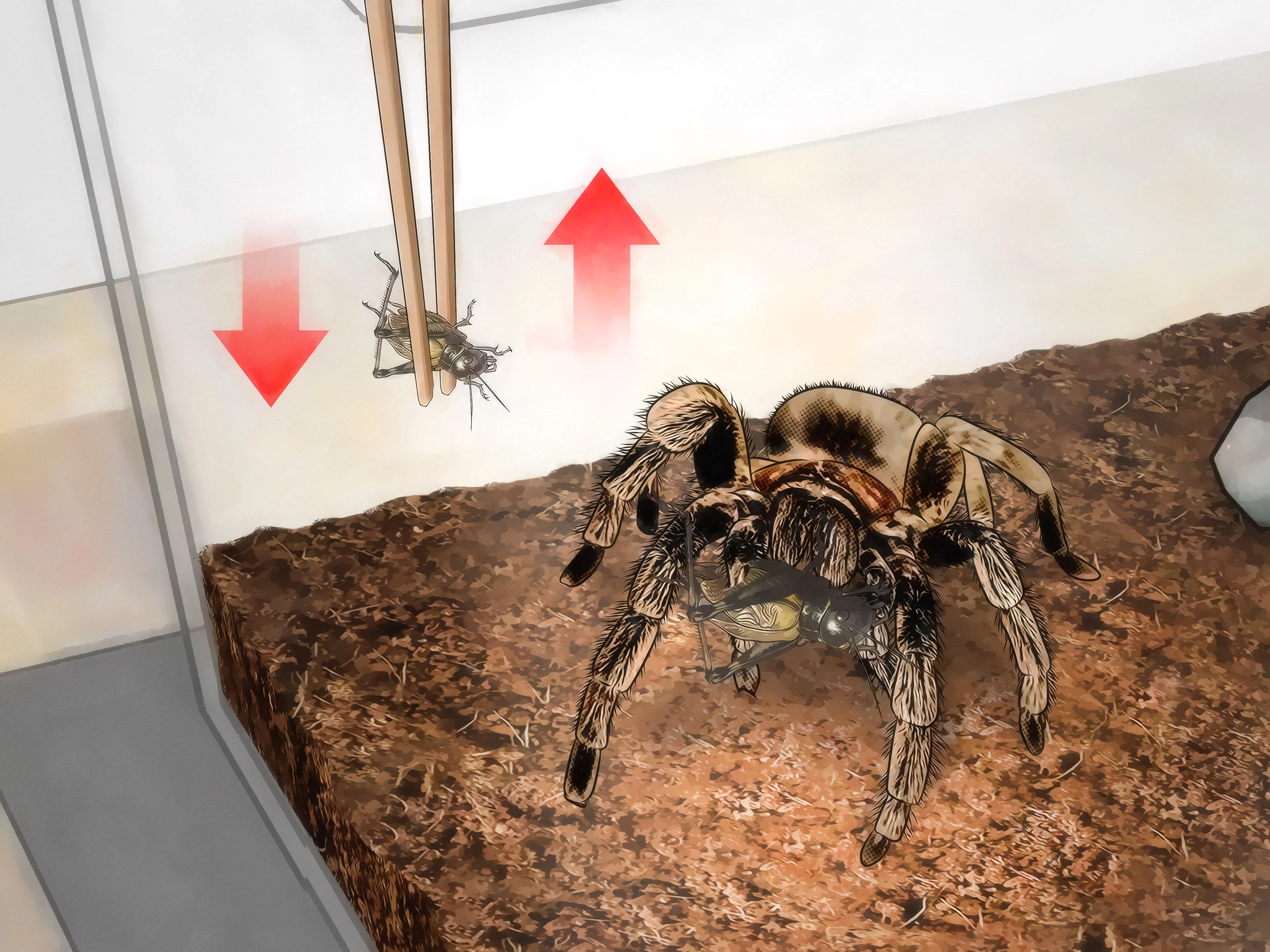
It is essential to remove any uneaten food from the enclosure within a reasonable time. Leaving uneaten prey in the enclosure can lead to several problems. The uneaten insects can stress the tarantula, especially if they are still alive. They can also cause the spider to become injured, and contribute to the build-up of waste. This will also potentially lead to mold and bacteria, negatively impacting the spider’s health. To remove the uneaten food, simply observe the tarantula after feeding. Any remaining insects can be removed with tongs or a net. Regular removal of uneaten food helps maintain a clean and healthy environment for your tarantula.
Providing Water
In addition to food, tarantulas need access to fresh water. Provide a shallow water dish in the enclosure, and make sure the water is always clean. The water allows them to stay hydrated, which is essential for their overall health. Spiderlings may benefit from a small, shallow water source. Ensure that the water dish is easily accessible and that the tarantula can safely drink from it. Regularly refill the water dish with fresh, clean water and replace the water completely to prevent bacteria growth. Providing adequate water is just as important as proper feeding, as it helps in digestion, molting, and overall well-being.
Common Feeding Problems and Solutions
Even with the best intentions, feeding your tarantula can present challenges. Understanding the common issues and having effective solutions helps you ensure that your pet stays healthy. Some common problems include tarantulas that refuse to eat, signs of overfeeding, and issues related to molting. Recognizing these problems early and taking the appropriate steps can often resolve them, thus preserving the health and vitality of your tarantula. With knowledge and proper practices, you can handle these issues and support your tarantula’s well-being.
Tarantula Refusal to Eat

If your tarantula refuses to eat, the first step is to assess the situation. The spider could be preparing to molt, which is a common reason for appetite loss. It might also be stressed due to environmental factors, such as temperature and humidity. Check the enclosure conditions to make sure everything is in the proper range. Review the feeding schedule; overfeeding can lead to loss of appetite. Ensure the prey size is appropriate, as offering insects that are too large may deter the spider. By observing your tarantula and addressing potential underlying issues, you can encourage it to resume feeding. Allowing the tarantula time to adjust and eliminating potential stressors will often resolve the problem.
Overfeeding Concerns
Overfeeding can result in health issues and shorten your tarantula’s lifespan. Watch for signs of obesity, such as a swollen abdomen or sluggish behavior. Decrease the feeding frequency and offer smaller portions if you suspect overfeeding. Avoid feeding the tarantula before a molt, as this can put extra strain on the spider. Adjusting the feeding schedule helps to maintain a healthy weight and prevent complications. It’s always better to slightly underfeed than overfeed. Monitoring your tarantula’s body condition and adjusting your feeding plan will help you avoid any health issues associated with overfeeding.
Molting and Feeding
Molting is a natural process for tarantulas, and it’s crucial to adjust feeding practices during this time. Tarantulas typically stop eating a few days or weeks before they molt. Avoid offering food to a tarantula that is preparing to molt, as it can interfere with the process. After molting, wait a few days before feeding your tarantula, as their fangs and exoskeleton will need time to harden. Providing food too soon after molting can be hazardous. Patience and understanding of the molting process are essential aspects of tarantula care. Remember to adjust the feeding schedule around molting to keep your tarantula healthy.
In conclusion, feeding your tarantula is a fundamental aspect of responsible pet ownership. By understanding their needs, selecting the right food, creating a suitable feeding schedule, and addressing common problems, you ensure a healthy and fulfilling life for your tarantula. This guide has given you all of the information needed to ensure your tarantula thrives. Remember to observe your tarantula, monitor its behavior, and adapt your practices to suit its individual needs. By implementing the guidelines outlined, you can enjoy a long and rewarding experience with your fascinating pet.
